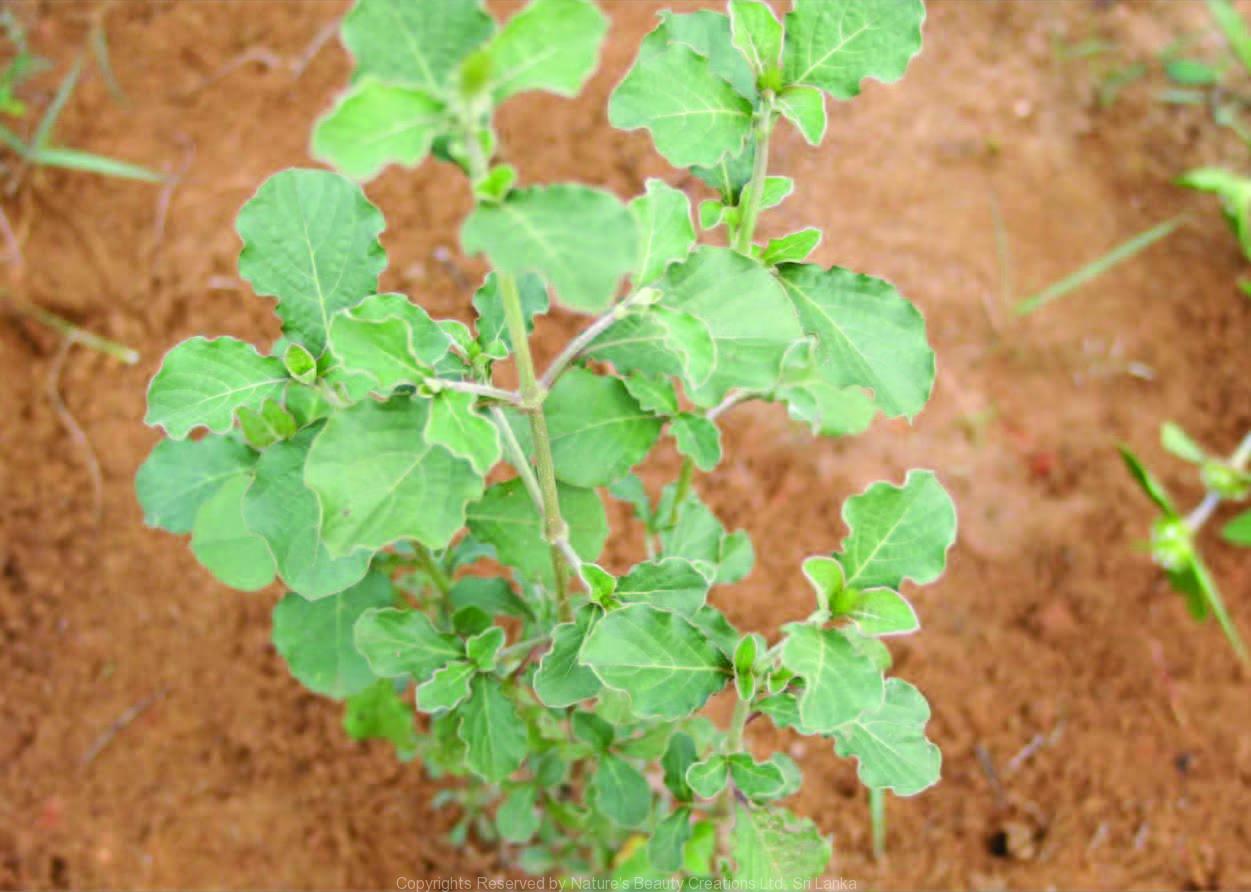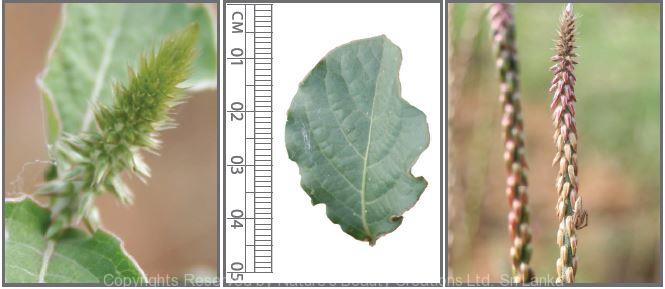

Traditional Knowledge
Useful plant parts :
Leaf and root
Uses in traditional medicine :
- Crushed young leaves are applied for toothache and taken for dysentery
- Roots are taken to treat bleeding piles and for improving memory enhancement
- Root bark removes opacities in eye
- Decoction is used in the treatment of diabetes, worm diseases and as a booster of the immune system
Scientific Research
Chemical constituents:
Saponins and a long chain alcohol: 17-pentatriacontanol from seeds and shoots; alkaloids: betalaine, achyranthine from plant
Bioactivity :
Methanol extract of leaves: antitumour promoters in carcinogenesis, prothyrodic and antiperoxidative; aqueous and methanol extracts of whole plant: antidiabetic; ethanol extract of roots: contraceptive/spermicidal, hypolipidaemic, antileprotic, antiasthmatic, antiarthritic, wound healing
Clinical:
References : Akhtar, M. S. and Igbal, J., (1991), Evaluation of the hypoglycaemic effect of Achyranthes aspera in normal and alloxan-diabetic rabbits, Journal of Ethnopharmacology, 31(1), 49-57. Chakraborty, A. et al., (2002), Cancer chemopreventive activity of Achyranthes aspera leaves on Epstein–Barr virus activation and two-stage mouse skin carcinogenesis, Cancer Letters, 177(1), 1-5. Dey, A., (2011), Achyranthes aspera L: Phytochemicals and Pharmaco- logical aspects, International journal of pharmaceutical sciences review and research, 9(2), 72-82. Hariharan, V. and Rangaswami, S., (1970), Structure of saponins A and B from the seeds of Achyranthes aspera, Phytochemistry, 9(2), 409-414. Misra, T. N. et al., (1992), Antifungal essential oil and a long chain alcohol from Achyranthes aspera, The International Journal of Plant Biochemistry, 31(5), 1811-1812. Paul, D. et al., (2006), In vitro determination of the contraceptive spermicidal activity of a composite extract of Achyranthes aspera and Stephania hernandifolia on human semen, Contraception, 73(3), 284-288. Tahiliani, P. and Kar, A., (2000), Achyranthes aspera elevates thyroid hormone levels and decreases hepatic lipid peroxidation in male rats, Journal of Ethnopharmacology, 71(3), 527-532.
Copyrights Reserved By
Natures Beauty Creations



